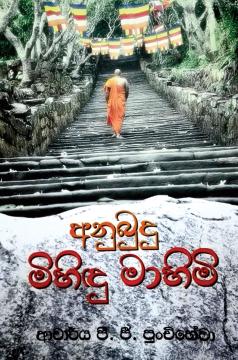
Author : Dr. P.G. Punchihewa
Reviewed by Rohana Ariyaratne
Among the many books written by Dr. P.G.Punchihewa those based on Research are prominent as they are factual, interesting and are of lasting value. It applies to the above book too because of a particular reason.
To the majority of Sri Lankans the name Mihindu Mahimi or his arrival remains a connotative factor often emphasized in that sense. It does not denote the events that preceded it, or the real significance in the Sri Lankan historical and cultural context.
Dr. Punchihewa’s extensive research delves into ‘Mahavansa’, ‘Samantha Pasadika’, many rock inscriptions, - some rarely cited, such as some of the pillar inscriptions in India, and a host of illustrious writers and authorities.
The background which made possible the arrival of Ven. Mahinda bringing Buddhism to Sri Lanka, is dominated by King Asoka’s intellectuality, his unfailing dedication to Buddhism, its propagation and his friendship with King Devanampiyatissa, whose intellectual propensity enabled him to grasp the message. On the other hand, the presence of a disorderly admixture of superstitious beliefs in spirits, faith in rocks and trees etc. prevalent those days in Sri Lanka as religions, made it possible to establish a religion, based absolutely on reason.
This was bolstered by the availability of at least, some vestiges of Buddhism, due mainly to the visits of Buddha and many insignificant and unknown messengers.
However, the impetus added to all these by bringing the Bo sapling and the Sacred Tooth Relic needs no emphasis or undue exaggeration. But that all these unique, almost predestined, events brought the nation to an unprecedented religious and cultural unity is certainly worth an annual celebration. They are the more significant, deserving utmost attention because of the present day social orientation towards consumerism plus pitiless, remorseless, exploitation. Consider the saying, ‘This endeavour of mine is not for the enjoyment of royal luxuries, but for the welfare and stability of Buddhism.’
Vijaya brought our forefathers to this island, but it is the establishment of Buddhism which unified the nation and gave it a separate, unique identity. Let it not be forgotten that a nation’s identity and unique quality rests not on mere material success, but on its incomparable values, creative drive and impetus.
From this point of view Dr. P.G. Punchihewa’s book, though small, contributes immensely to our understanding of our true origins and traditions. Therefore, it would be judicious if this book is recommended as essential reading for the higher classes in schools, as well as the individual reader who prefers truth and discovery, rather than mere sentimental romance. The language in which the book is written, without heavy pedantic words, is indeed appreciable.
